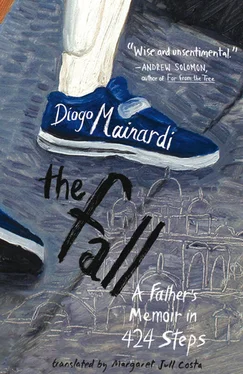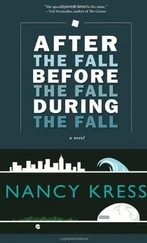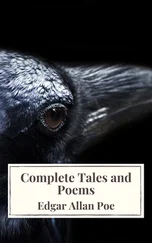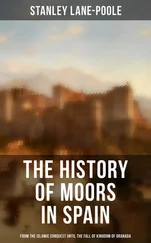In 1640, after the deaths of Rumbertus and Cornelia, Rembrandt and Saskia had another daughter. Like their previous daughter, her name was Cornelia. And like the previous Cornelia, she died prematurely, at two months.
In 1641, after the deaths of Rumbertus, the first Cornelia and the second Cornelia, Rembrandt and Saskia had another son. On their fourth and final attempt, it worked. The child survived.
The name of the surviving son: yes, Titus.
289
Rembrandt exploited his son Titus in the same way I exploited my son Tito.
He painted him reading. He painted him writing. He painted him holding a magnifying glass. He painted him with a sword and wearing armor.
When Titus was fourteen, Rembrandt painted him wearing a black beret and a pearl earring. When Titus was seventeen, Rembrandt painted him wearing a red beret and a gold chain. When Titus was nineteen, Rembrandt painted him wearing a black beret and a moustache. When Titus was twenty-two, Rembrandt painted him wearing a black beret and a fur coat.
290
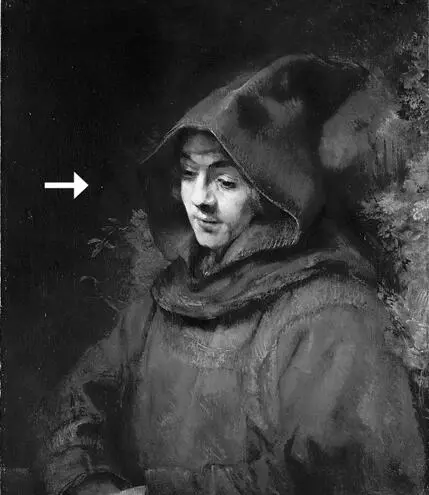
(Picture Credit 1.15)
291
In the previous image: Rembrandt’s son Titus in Monk’s Habit .
The painting is by Rembrandt van Rijn. It dates from 1660.
292
Titus was Rembrandt’s principal model.
Only Rembrandt himself posed for more paintings, with his seventy self-portraits — always looking through a looking glass, his image reversed.
As well as posing for portraits, Titus also posed, from his birth onward, for other paintings by his father, especially those that drew their inspiration from biblical passages. Rembrandt depicted him as Joseph, as Daniel and as the young Tobias.
In The Evangelist Matthew and the Angel , Titus is the angel whispering into the saint’s ear. In Christ Seated Disputing with the Doctors , Titus is Jesus Christ. In Christ Returning from the Temple with His Parents , Titus is Jesus Christ. In The Twelve-year-old Jesus in Front of the Scribes , Titus is, again, Jesus Christ.
293
For Rembrandt, Titus was Everything.
294
If, as John Ruskin argued, the history of art can be divided into those who worship God and those who worship Man, then Rembrandt is the hero of those, like me, who only worship Tito/Titus.
295
John Ruskin wrote:
It is the aim of the best painters to paint the noblest things they can see by sunlight. It was the aim of Rembrandt to paint the foulest things he could see — by rushlight .
According to John Ruskin, what marked Rembrandt out was the vividness of his darkness and the inexpressiveness of his light. The colors in his paintings were murky and fetid. Instead of illuminating beauty, he cloaked ugliness in shadows.
When Rembrandt painted the Virgin Mary ascending into heaven, he saw “only the lamplight upon the hair of a costermonger’s ass.” When he painted “an unsightly firework of unsightlier angels,” he showed “the feet instead of the head, and the shame instead of the honour.” When he made an etching of the parable of the Good Samaritan, “we may see only in distance the back of the good Samaritan, and in nearness the back of the good Samaritan’s dog,” and the dog is defecating.
296
Tito was my Rembrandt.
His cerebral palsy obscured everything I had always worshipped. In particular, literature. What it illuminated — what became my sole focus — were the most ordinary, most domestic, most familiar aspects of life.
In that moment, I saw only Tito’s deformed feet taking those sixteen steps. And in the foreground, I saw Nico defecating.
297
Rembrandt’s finest work, according to John Ruskin, was his self-portrait as the Prodigal Son in the tavern, in which he is dressed as a gentleman, with his wife, Saskia, sitting on his knee.
Rembrandt is looking at us through the mirror, irreverently flaunting his private life and raising a glass of wine in a toast to domestic bliss.
298

(Picture Credit 1.16)
299
In the previous image: The Prodigal Son in the Tavern , also known as Portrait of the Artist with his Wife Saskia , by Rembrandt van Rijn.
The painting dates from 1635.
Rembrandt is the Prodigal Son. Saskia is the prostitute.
300
John Ruskin noted that in The Prodigal Son in the Tavern , Rembrandt could have portrayed the nobility of love and married life, because he was one of the greatest painters of all time.
But what did he do?
He again painted “the foulest thing by rushlight,” illuminating “only corners and points of things, and those very corners and points ill and distortedly.”
301
Man, for Rembrandt, is always imperfect and distorted — a falling body.
302
Like Rembrandt, I too was flaunting my private life and drinking a toast to domestic bliss.
My domestic bliss was represented by an imperfect, distorted boy, who, at that moment, was capable of taking sixteen steps without falling.
303
Marcel Proust in Jean Santeuil :
We had such a strong desire to understand John Ruskin’s views on Rembrandt that, for this reason alone, we started studying English .
What made me understand John Ruskin’s views on Rembrandt was Tito’s cerebral palsy.
Tito’s cerebral palsy became my second language.
304
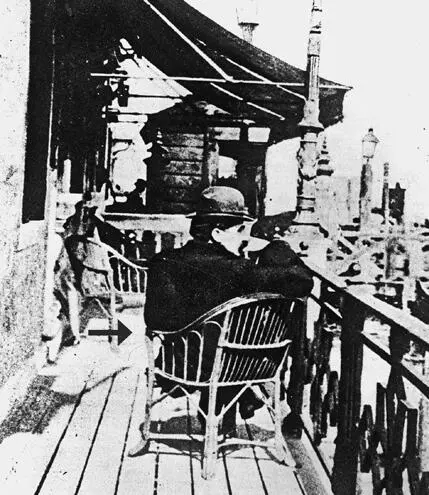
(Picture Credit 1.17)
305
In the previous image: Marcel Proust by the Grand Canal in Venice, looking at my window.
306
Marcel Proust travelled to Venice in 1900, taking John Ruskin’s books with him as his guide.
His walks through Venice and John Ruskin’s books became the central themes of his own books.
307
We visited Venice every year.
In Rio de Janeiro, Tito used to walk with his therapist, but in Venice, in the holidays, he walked only with me.
He would go ahead of me, with his ungainly steps. I would be right behind him, ready to catch him if he should fall.
308
Marcel Proust remarked that a walk in Venice had the power to “educate the spirit,” separating out the “intellectual aristocracy” from the “intellectual proletariat.”
Throughout In Search of Lost Time , he refers constantly to analogies between the “aristocratic” memories of Venice and the “proletarian” memories of his characters.
The streets of Combray are mirrored in the streets of Venice. The face of Albert Bloch is mirrored in a portrait of Gentile Bellini. Albertine’s dress is mirrored in a painting by Vittore Carpaccio. Domestic life in Aubervilliers is mirrored in a lost canal.
309
In the last volume of In Search of Lost Time , the Narrator stumbles and almost falls in the courtyard of the Guermantes mansion.
The incident reminds him of Venice’s uneven paving stones.
Suddenly the events of his past life all fit together like a mosaic and he is filled with a sense of happiness.
He realizes that his memories of walking in Venice — along with the images and analogies they evoke — could give meaning to his life.
Читать дальше
